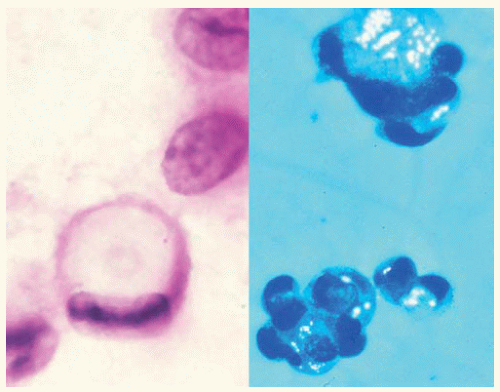Foreign-Body Granulomas
Foreign-body granulomas may occur in the lung in the setting of intravenous drug abuse, chronic aspiration, and mineral oil aspiration, among other situations.
Part 1 Intravenous Drug Abuse
Abida K. Haque
Carlos Bedrossian
Chronic intravenous drug abuse is associated with formation of foreign-body giant-cell granulomas in the pulmonary alveolar interstitium and small vessels. Intravenous injection of unfiltered suspensions of drugs intended for oral use can result in formation of granulomas containing polarizable cellulose and talc in the lumen and walls of small to medium pulmonary arteries. Some of the common drugs used are methadone, propoxyphene hydrochloride, methylphenidate, tripelennamine, barbiturates, and pentazocine. Recently, several case reports of pulmonary granulomas following intravenous injection of pentazocine via parenteral nutrition catheters have been reported.
Histologic Features
Granulomas consist of lymphocytes, macrophages, and multinucleated giant cells containing small crystalline to plate-like polarizable foreign bodies.
Alveolar pulmonary capillaries and sometimes the small arterioles may show thrombosis associated with the birefringent crystalline deposits of talc.
Granulomas may be associated with fibrosis.
Pulmonary hypertensive changes, usually of mild degree, may be seen in chronic drug abusers.
 Figure 47.1 Sputum cytology. Macrophages with refractile particles in Diff-Quik preparation on the left and polarized on the right.
Stay updated, free articles. Join our Telegram channel
Full access? Get Clinical Tree
 Get Clinical Tree app for offline access
Get Clinical Tree app for offline access

|